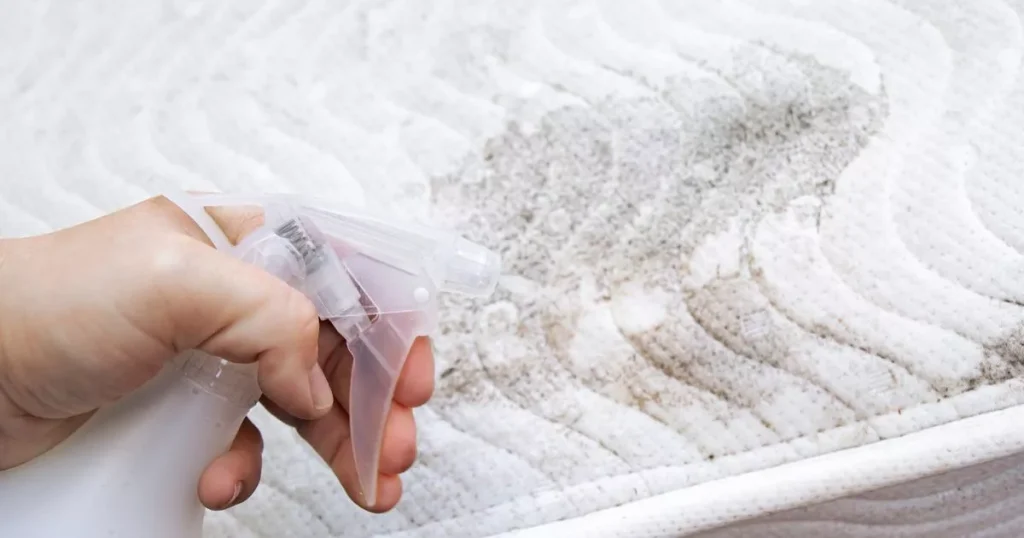Mould spores from mattresses can cause respiratory issues, allergies, and potential risks of inhaling bacteria. Louise Allen, a cleaning expert, suggests cleaning mattresses every six months to prevent mould growth that can result from moisture build-up. The solution includes a simple mixture of lemon juice, salt, and baking soda to eliminate mould effectively and inexpensively. Proper ventilation in the bedroom is also crucial to prevent moisture accumulation. Investing in a dehumidifier can help lower moisture levels, making it less hospitable for mould. Additionally, using a bed frame that lifts the mattress off the ground can prevent mould growth.
Mattresses provide an ideal environment for mould to thrive due to moisture from sweat and accidental spills. Research has found that a seven-year-old mattress can harbour millions of bacteria per square inch. Regular cleaning and maintenance of mattresses can greatly reduce the risk of mould growth. It is essential to vacuum the mattress regularly to remove dust and allergens, air it out periodically, and follow the manufacturer’s instructions for rotating or flipping. Ignoring maintenance tasks can allow mould to spread unnoticed, degrading the quality and healthiness of the mattress.
Aside from respiratory issues and allergies, mould exposure can increase the risk of inhaling bacteria such as E. coli, leading to symptoms like diarrhoea, vomiting, sore throats, and itchy eyes. Using a DIY solution of lemon juice, salt, and baking soda can effectively eliminate mould from the mattress. By sprinkling lemon juice over the mouldy area, followed by salt and baking soda, the spores can be dissolved and killed. Placing the mattress in sunlight can further aid in killing mould through UV rays. This budget-friendly solution will only cost 20p if purchased at Aldi.
Proper ventilation in the bedroom, such as exposing the mattress to air during the day or using fans to circulate air, is essential to prevent moisture accumulation. Acting quickly to dry any spills on the mattress, using a fan or hairdryer on a cool setting, and investing in a dehumidifier can significantly lower moisture levels. Adequate ventilation helps create an environment that is less hospitable for mould growth. Additionally, ensuring that the bedroom has good ventilation by keeping doors or windows open when possible can further prevent moisture build-up.
In conclusion, maintaining a clean and well-ventilated sleeping environment is crucial to prevent mould growth and the associated health risks. Regularly cleaning mattresses, such as using a DIY solution with lemon juice, salt, and baking soda, can effectively eliminate mould and improve the overall quality and healthiness of the mattress. By following proper maintenance and ventilation practices, homeowners can reduce the risk of respiratory issues and allergies caused by mould exposure. Investing in dehumidifiers and using bed frames that promote airflow can further enhance the prevention of mould growth on mattresses.


